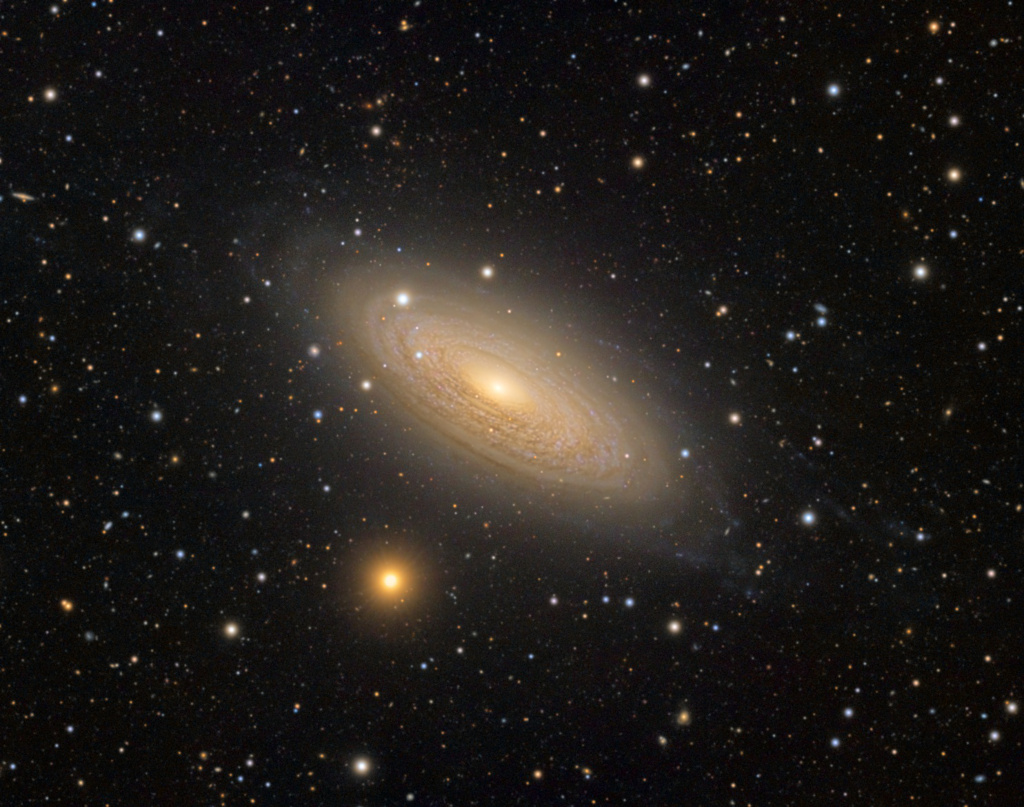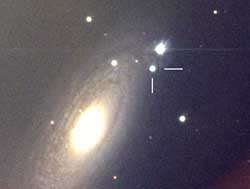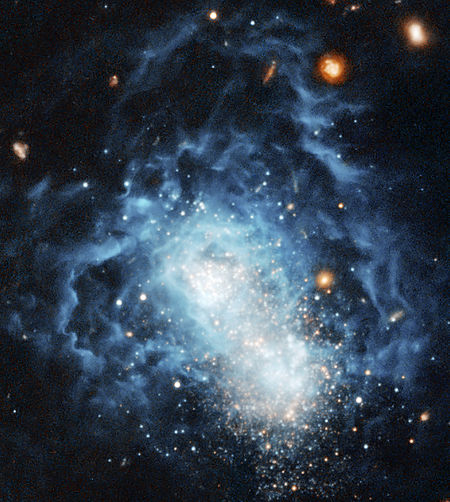Today's APOD is a very fine picture acquired with an amateur telescope! I particularly like the portrait of NGC 2841's outer regions. For a galaxy with such a regular and symmetrical dust disk, the outer regions are interestingly "disturbed". They also show clear signs of star formation.
Personally I'm intrigued by a blue-white foreground star masquerading(?) as a supernova.It sure looks like a supernova to me. Compare it with the blue-white supernova SN 2020jfo in M61:
"Before" and "After" images of M61 with Supernova 2020jfo (arrowed).
Photo: TheVastReaches.
Well, I'll bet the blue-white star in NGC 2841 is just a foreground star, because there is no way that everybody would have missed it if it had been a real supernova!
In today's APOD, also note the only pink emission nebula that is bright enough to show up in the image - and do note that Vitali Pelenjow did not use an Hα filter.
To get a good grip on what NGC 2841 looks like, we need to look at it(s central regions) in a Hubble image.It is also interesting to compare it with a very similar galaxy, NGC 2775:
ESA/Hubble wrote regarding their image of NGC 2841:
Star formation is one of the most important processes in shaping the Universe; it plays a pivotal role in the evolution of galaxies and it is also in the earliest stages of star formation that planetary systems first appear.
Yet there is still much that astronomers don’t understand, such as how do the properties of stellar nurseries vary according to the composition and density of gas present, and what triggers star formation in the first place? The driving force behind star formation is particularly unclear for a type of galaxy called a flocculent spiral, such as NGC 2841 shown here, which features short spiral arms rather than prominent and well-defined galactic limbs.
But when it came to NGC 2775, astronomers seemed much more certain of what caused the galaxy's flocculent spiral arms:
NASA / ESA / Hubble wrote:
NGC 2275 has a diameter of 80,000 light-years and is classified as a flocculent spiral galaxy. “NGC 2775’s ‘flocculent’ spiral arms indicate that the recent history of star formation of the galaxy has been relatively quiet,” Hubble astronomers said. “There is virtually no star formation in the central part of the galaxy, which is dominated by an unusually large and relatively empty galactic bulge, where all the gas was converted into stars long ago.” “Millions of bright, young, blue stars shine in the complex, feather-like spiral arms, interlaced with dark lanes of dust,” they noted. “Complexes of these hot, blue stars are thought to trigger star formation in nearby gas clouds.”
“The overall feather-like spiral patterns of the arms are then formed by shearing of the gas clouds as the galaxy rotates.” “The spiral nature of flocculents stands in contrast to the grand design spirals, which have prominent, well defined-spiral arms.”
Okay, I guess.

¯\_(ツ)_/¯
Ann
 Spiral Galaxy NGC 2841
Spiral Galaxy NGC 2841





